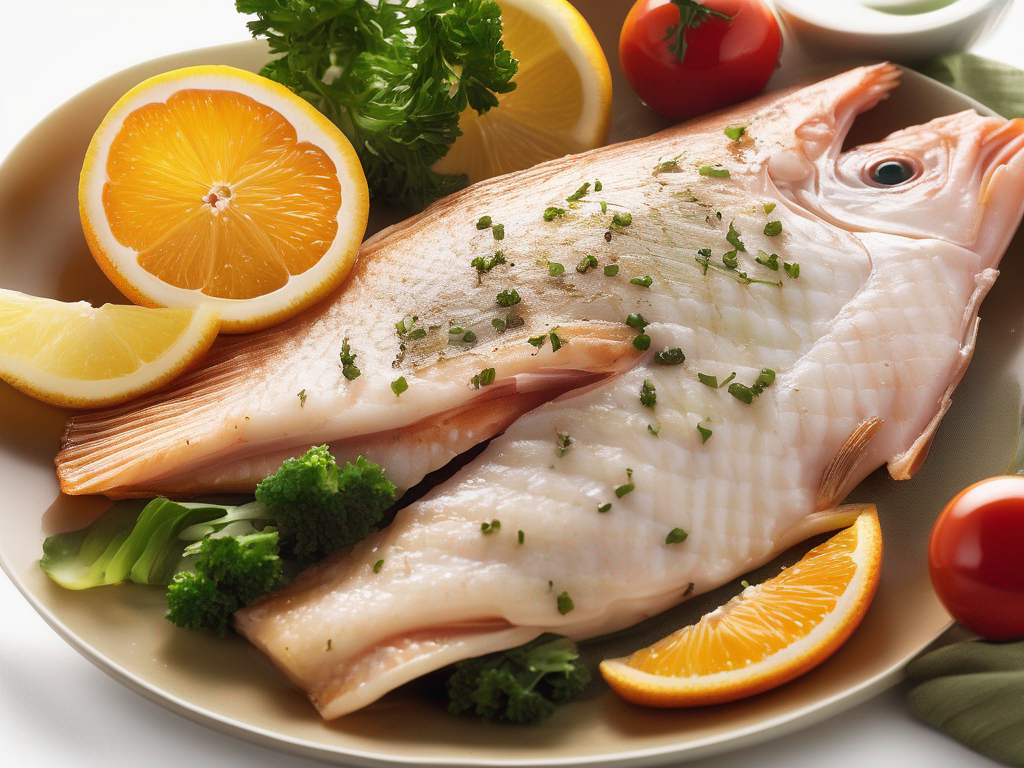
Preserving Orange Roughy Fresh Cooked for Future Meals
Get Your Free Food Safety Cheat Sheet
30 most common foods with instant answers. Print it and stick it on your fridge—completely free!
Preserving Orange Roughy Fresh Cooked for Future Meals
If you've prepared a delicious batch of orange roughy fresh cooked and want to enjoy it later, proper preservation is key to maintaining its flavor and quality. Orange roughy is a delicate and flavorful fish that can spoil quickly if not stored correctly. In this guide, we'll explore the best ways to preserve orange roughy fresh cooked for future meals. (Orange roughy fresh cooked)
Understanding Orange Roughy Fresh Cooked
Orange roughy is a popular deep-sea fish known for its mild flavor and firm texture. When cooked properly, it can be a delightful addition to any meal. However, due to its delicate nature, orange roughy can spoil quickly if not stored correctly. Freshly cooked orange roughy should be handled with care to ensure it remains safe to eat.
Tips for Cooking Orange Roughy Fresh
- Cook the fish until it reaches an internal temperature of 145°F to ensure it is safe to consume.
- Avoid overcooking, as this can cause the fish to become dry and less flavorful.
- Use seasonings and marinades to enhance the natural flavor of the fish.
Best Ways to Preserve Orange Roughy Fresh Cooked
1. Refrigeration
Refrigeration is one of the best ways to preserve cooked orange roughy for a short period. Follow these steps to refrigerate your orange roughy:
- Allow the fish to cool to room temperature before storing it.
- Place the cooked orange roughy in an airtight container or wrap it tightly in aluminum foil.
- Store the fish in the refrigerator at a temperature of 40°F or below.
- Consume the fish within 3-4 days for the best quality.
2. Freezing
Freezing is an excellent way to preserve cooked orange roughy for an extended period. Here's how to freeze your orange roughy:
- Allow the fish to cool completely before freezing.
- Wrap the cooked orange roughy in plastic wrap or place it in a freezer-safe container.
- Label the container with the date of freezing to track its freshness.
- Store the fish in the freezer at 0°F or below.
- Consume the fish within 3-4 months for optimal taste and texture.
3. Vacuum Sealing
Vacuum sealing is another effective method for preserving cooked orange roughy. Vacuum sealing removes air from the packaging, preventing freezer burn and extending the fish's shelf life. Follow these steps to vacuum seal your orange roughy:
- Allow the fish to cool completely before vacuum sealing.
- Place the cooked orange roughy in a vacuum-sealed bag.
- Use a vacuum sealer to remove the air from the bag and seal it tightly.
- Store the vacuum-sealed fish in the freezer for long-term preservation.
4. Pickling
Pickling is a traditional preservation method that can add flavor to cooked orange roughy. To pickle your orange roughy, follow these steps:
- Prepare a pickling solution using vinegar, water, salt, and spices.
- Place the cooked orange roughy in a sterilized jar.
- Pour the pickling solution over the fish, ensuring it is completely submerged.
- Seal the jar tightly and store it in the refrigerator.
- Allow the fish to pickle for at least 24 hours before consuming.
Conclusion
Preserving orange roughy fresh cooked for future meals requires proper handling and storage techniques. Whether you choose to refrigerate, freeze, vacuum seal, or pickle your cooked fish, it's essential to follow food safety guidelines to ensure its quality and safety. By following the tips outlined in this guide, you can enjoy delicious orange roughy dishes whenever you please. [Click here](/food/orange roughy fresh cooked) for more information on orange roughy fresh cooked. (Orange roughy fresh cooked)
Authoritative Food Safety References
These agencies and university labs inform every tip and health precaution we publish.
USDA FoodKeeper – Cold Storage Guidelines
Official refrigerator, freezer, and pantry timelines maintained by the U.S. Department of Agriculture.
Visit USDA FoodKeeperFDA Produce Safety Rule & Grower Guidance
Field-to-fridge handling practices that prevent contamination of fruits, vegetables, and leafy greens.
Visit FDA Produce SafetyCDC Foodborne Illness Prevention Hub
Surveillance-backed guidance on pathogens, symptoms, and steps to reduce foodborne illness risk.
Visit CDC Food SafetyUC Davis Postharvest Technology Center
University research detailing optimal storage atmospheres for produce after harvest.
Visit UC Davis PostharvestPenn State Extension – Home Food Preservation & Safety
Peer-reviewed extension bulletins on safe canning, chilling, and reheating practices.
Visit Penn State ExtensionGet Your Free Food Safety Cheat Sheet
30 most common foods with instant answers. Print it and stick it on your fridge—completely free! Want more? Upgrade to the complete guide with 70+ foods.
Scan your food directly and get instant safety info using our AI-powered camera feature.